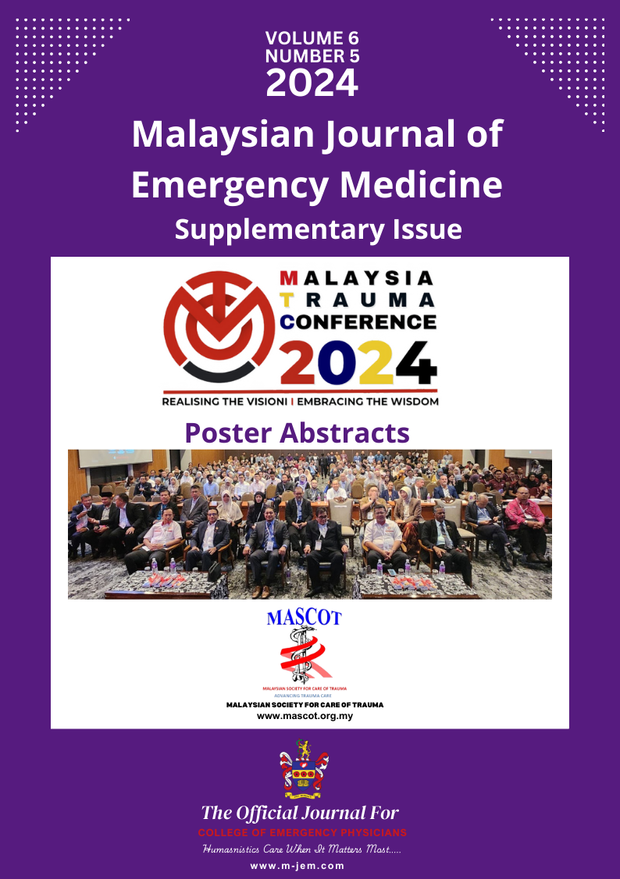A13 Case Series Of Traumatic Diaphragmatic Hernia (TDH): Misdiagnosed Can Be Disastrous!
Main Article Content
Abstract
INTRODUCTION
The incidence of TDH is exceedingly low, about 8% of all major blunt trauma patient. Prompt diagnosis is essential, as missed injury is associated with significant morbidity and mortality.
CASE DESCRIPTION
Case 1
39 years old gentleman, involved in motor-vehicle accident (MVA). Patient was a car driver collided with another car. Patient was tachypneic and desaturated under room air. Chest x-ray (CXR) was interpreted as left hemopneumothorax. Ryle’s tube was inserted and revealed the tube was in left lung cavity. Computed tomography (CT) thorax, abdomen and pelvis (TAP) showed features of left diaphragmatic hernia with stomach content and left hemothorax. Explorative laparotomy and left TDH repair were performed.
Case 2
45 years old lady presented to ED after involving in MVA. Patient was a car driver, was hit by 4x4 vehicle. She was tachypneic and desaturated under room air. Left hemothorax was initially diagnosed. Chest tube was inserted however did not functioning. Ryle’s tube was inserted, CXR showed ryle’s tube was in the left lung cavity with encysted radiolucent area covering left thorax. CT TAP showed left TDH with herniation of stomach and large bowel loops with massive left pneumothorax. Patient underwent explorative laparotomy and left TDH repair.
DISCUSSION
TDH often results from blunt abdominal trauma. Earlier and prompt diagnosis made can significantly reduce the rate of morbidity and mortality. CXR of TDH can mimic other findings such as atelectasis, pneumothorax, hemothorax, and/or pulmonary contusion. Hence, correct interpretation of CXR is very crucial in making diagnosis in order to avoid inappropriate management of the patient.
CONCLUSION
TDH is a diagnosis made on a high index of suspicion which has to be confirmed with appropriate imaging (computed tomography is gold standard). Initial imagings such as CXR and ultrasonography are vital for the diagnosis of TDH. CXR with nasogastric tube in-situ is the easiest way to detect TDH if CT imaging is not available especially in district setting. Misinterpretation of chest radiograph with other diagnosis can delay the definitive treatment of TDH and lead to another serious complication.
Metrics
Article Details

This work is licensed under a Creative Commons Attribution-NonCommercial 4.0 International License.

